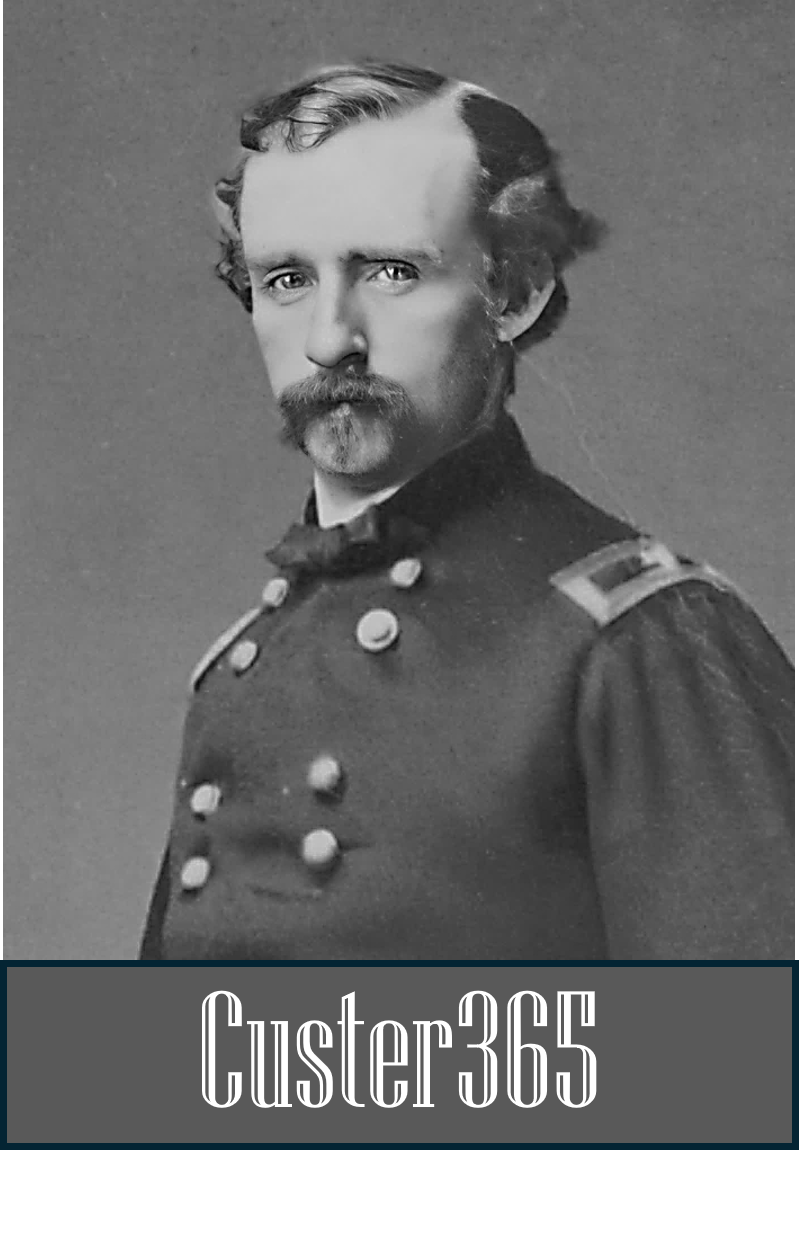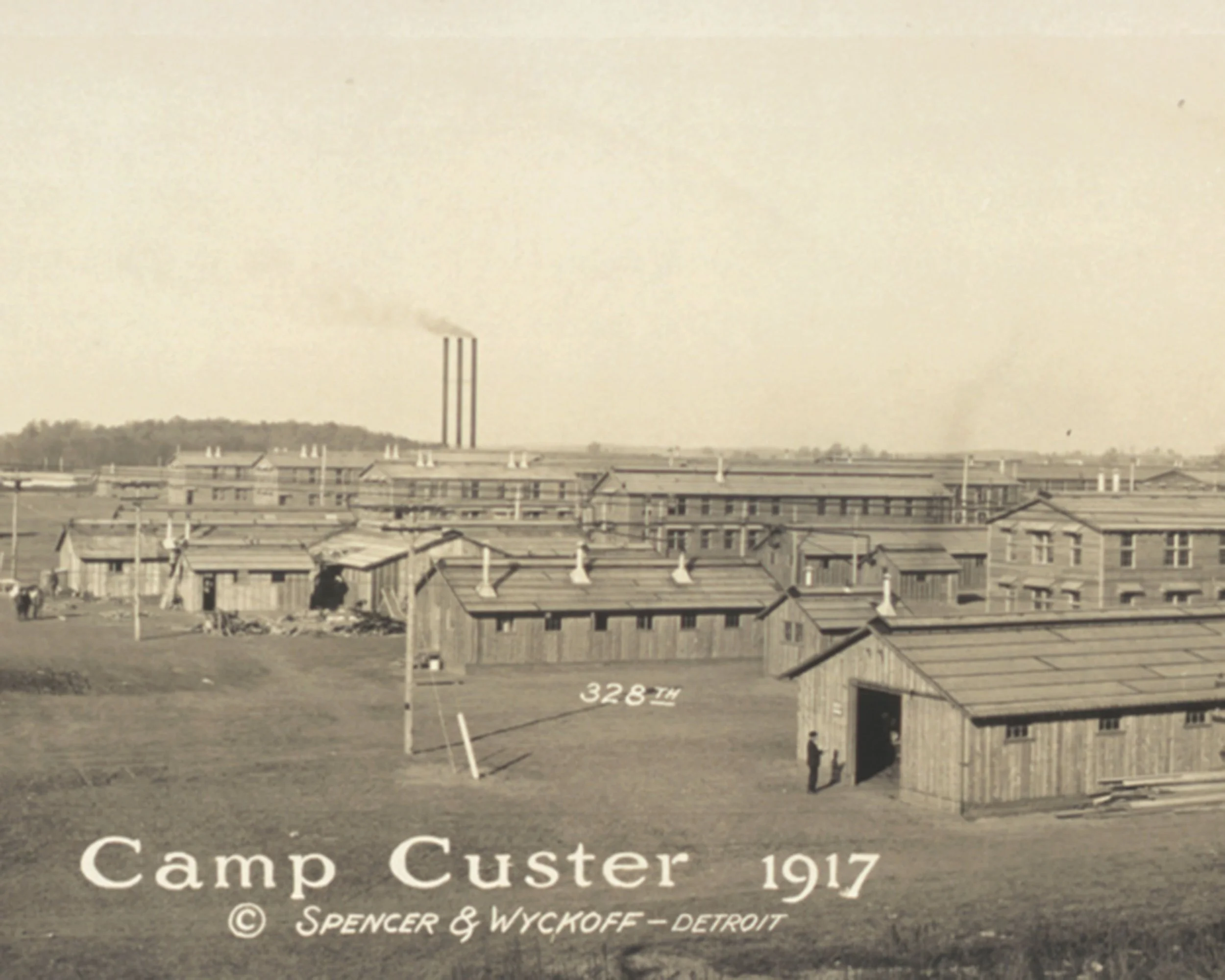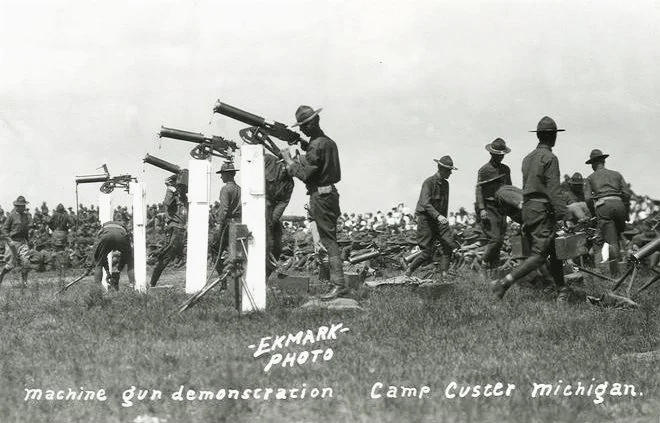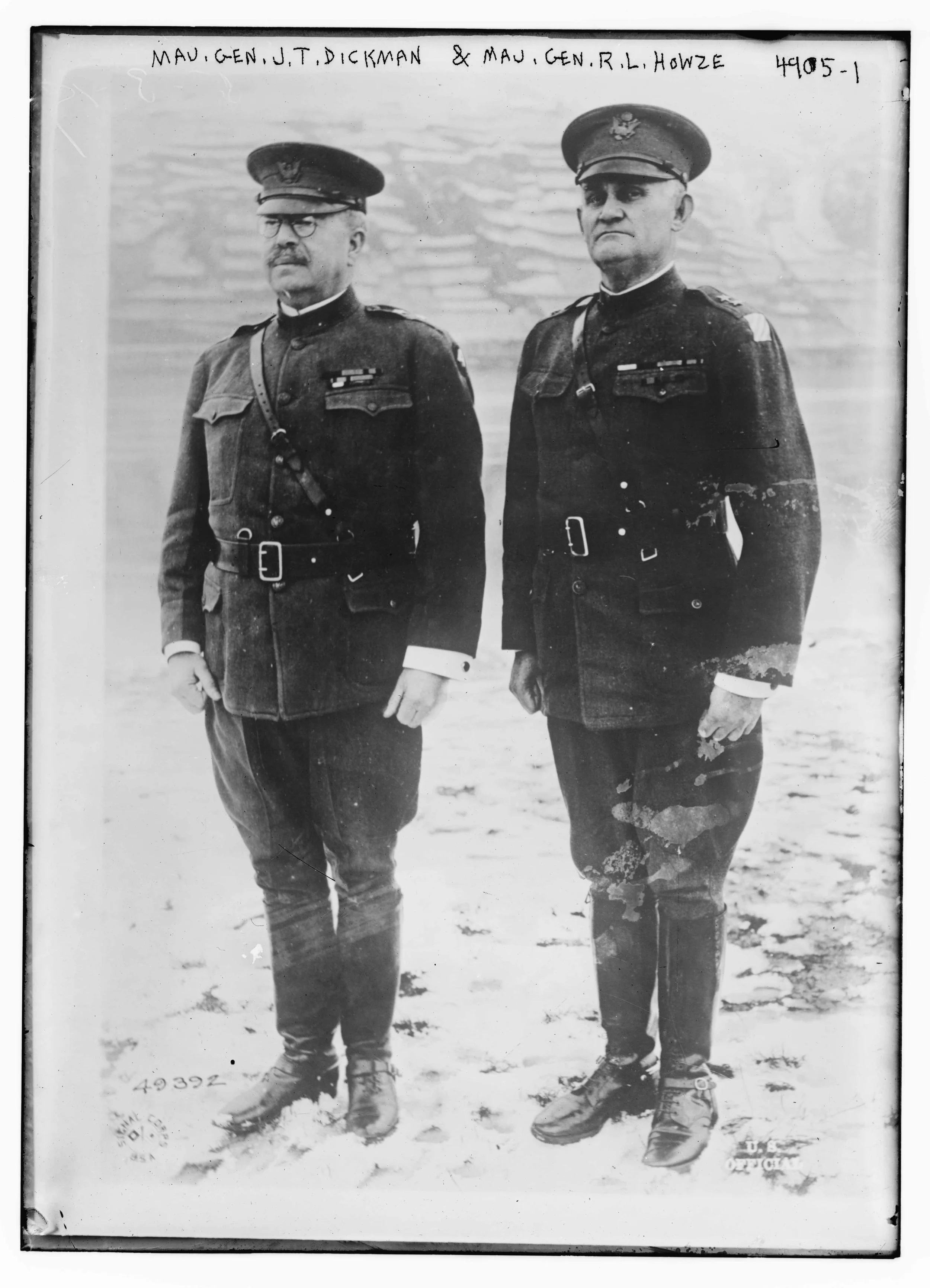JULY 7: Camp Custer Construction Underway
On July 7, 1917, construction of Camp Custer, named for the Michigan-raised general of Western lore, is underway. It is built in little more than five months near the town of Battle Creek, Mich., and will serve as a training camp for newly enlisted and drafted soldiers preparing to fight in World War I. The facility trained and/or demobilized more than 100,000 troops during the war.
Construction of Camp Custer, one of 32 cantonment centers built for the U.S. Army to train American soldiers for World War I, begins in July 1917 and concludes in early December of the same year. (Credit: Library of Congress)
According to Michael Delaware, creator of the podcast “Tales of Southwest Michigan’s Past,” Atkins & Jones published a booklet about Camp Custer in 1918. Entitled “Souvenir, Camp Custer Michigan”, it called the camp, “a national university that takes the young man from the farm, the shop, and the office and in a few months graduates soldiers trained and equipped to fight the battles of democracy.” It was one of 32 cantonment sites, or military training camps, constructed hurriedly across the U.S. to meet the emergency need for trained soldiers after President Woodrow Wilson signed a declaration of war against Germany on April 6, 1917. Sixteen of the centers were built for the U.S. Army and another 16 for the U.S. Army Reserves.
In less than six months, a complete military city of 2,000 buildings with “comfortable quarters” for 36,000 men stretched across four miles of territory. Camp Custer had its own water system, paved roadways, hospital, sewer system, central heating plants, bakery, laundry, “and all institutions that go to make a modern sanitary city,” according to Atkins & Jones.
Part of the gunnery range at Camp Custer near Battle Creek, Mich. (Credit: Willard Library collection.)
Maj. Earl B. Morden left his civilian railroad job to oversee construction. The contractor was Porter Brothers and 8,000 men from all over the Midwest were employed on the project. The volume of material used for construction would fill a freight train 36 miles long. Total cost was $8 million. Barracks, a rifle range, drill grounds, and quartermaster buildings covered 10,000 acres. A total of “200 farmers vacated their land to make way for the needs of the nation.”
U.S. Army Maj. General Joseph T. Dickman (left) and Maj. General R.L. Howze. (Credit: Library of Congress)
Construction began on July 1, 1917. On Aug. 26, 1917, Maj. General Joseph T. Dickman arrived to take charge of organizing the U.S. Army’s 85th Infantry Division, also known as the Custer Division. A few weeks later men from Michigan and Wisconsin arrived to begin training, and on Dec. 5, 1917, the camp was turned over to the government as completed. A few years later, the U.S. government sued Porter Brothers claiming over-charges during construction.
In the fall of 1918, a Spanish flu outbreak struck Camp Custer and claimed the lives of 674 soldiers over a period of 35 days. In total, an estimated 50 million people around the world lost their lives to the 1918 flu pandemic.




